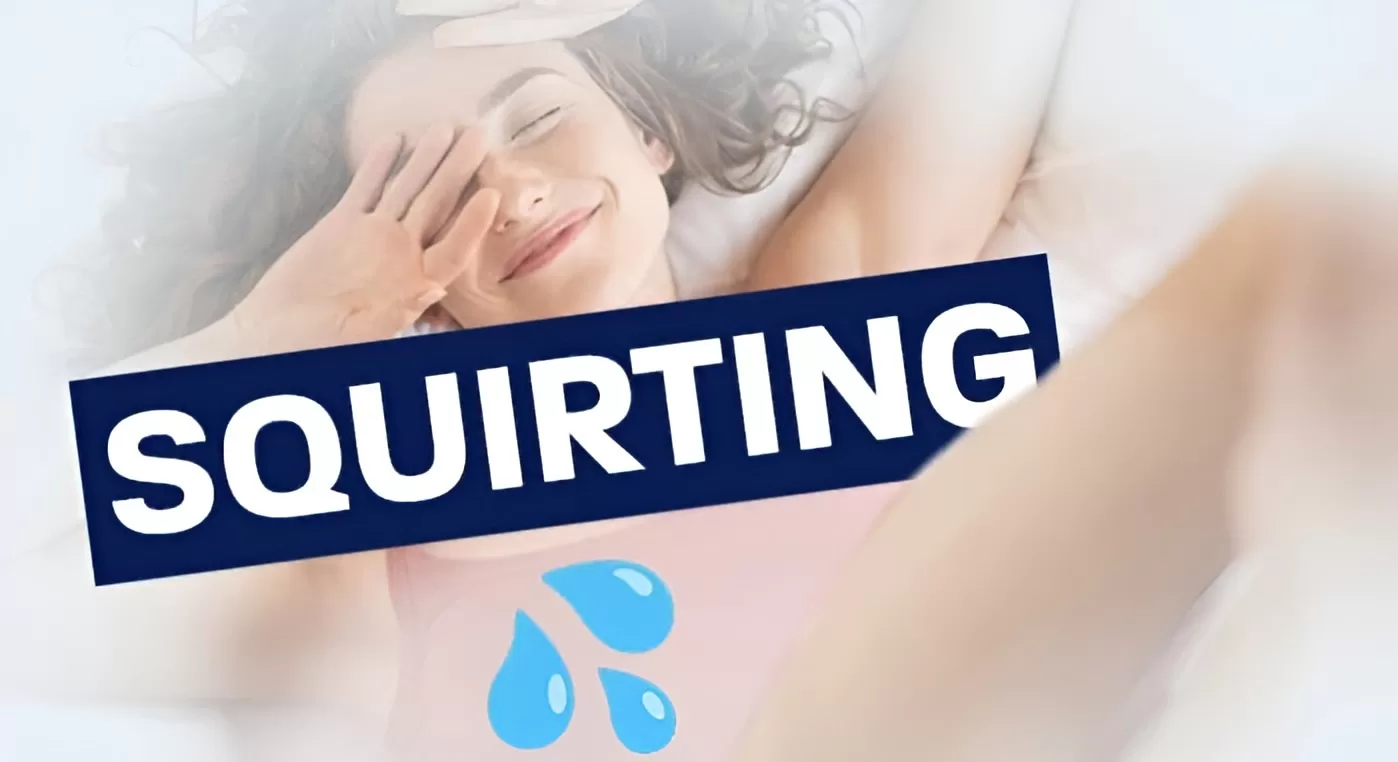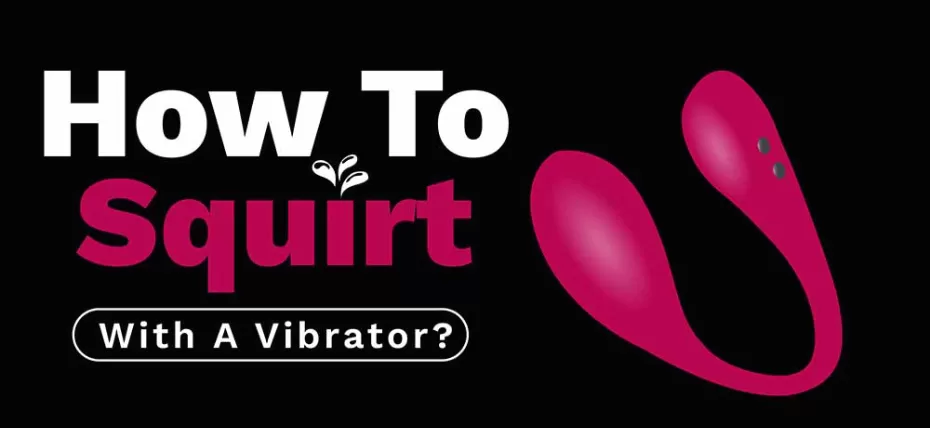- By couponsss
- 09/03/2025
- Married life, Sex Toys, Sexual Exploration
Table of Contents
ToggleWhat is a Female Squirting Orgasm?
Both intimacy and sexuality require exploration, and one topic that has earned attention, curiosity, controversy, and intrigue is the squirting orgasm. For a considerable number of people, this subject remains controversial due to sociocultural taboos and outdated medical views.
This guide aims to explain squirting by integrating research, anatomy, and practical applications. so if you’re asking what squirting is, how it works, what the sensations are like, or if you want practical steps to consider while exploring squirting, then this guide is for you.
Squirting and its mysteries
Squirting is defined as the expulsion of fluid from the urethra of a vagina during sexual arousal or orgasm. This phenomenon is distinctly different from female ejaculation, although many people confuse the two. Female ejaculation is defined as the small expulsion of fluid from the Skene’s glands.
The common belief that squirting is simply a more intense form of urination is incorrect. Studies indicate that the fluid expelled during squirting is an amalgamation of prostatic secretions and small amounts of urine. While most people still choose to stigmatize or misunderstand it. Squirting is neither “unclean” or “wrong.”

The Anatomy Behind Squirting
To better understand how squirting occurs, it is vital to understand the anatomy involved in the process. One of the most important anatomical features are Skene’s glands also known as ‘female prostate’. They lie on the ventral wall of the vagina and encircle the urethra.
Primary Functions of The Skene’s Glands
Fluid secretion: The glands are capable of secreting prostatic fluid containing some enzymes and other specific markers.
G spot sensitivity: The glands are found next to the G-spot which is a very sensitive area associated frequently with squirting orgasms.
Under stimulation, the Skene’s glands get engorged with blood and some may discharge fluid into the urethra to be expelled during orgasm. This is usually coupled with peak levels of pleasure and heightened sensations.
How Squirting Works
Squirting does not occur randomly. Certain arousal methods and levels of stimulation are known to influence the chances of achieving this phenomenon.
The Mechanics
G-Spot Stimulation
The g-spot, which is roughly 2-3 inches into the vagina on the front wall, has a pronounced part in initiating squirting. Applying pressure pulsating at a rhythm usually sets off the Skene’s glands.
Clitoral Stimulation
Most of the time, external relaxing pelvic muscle contractions coupled with clitoral stimulation aids arousal to the next level and prepare the body for squirting.
Relaxation and Arousal
The unclenching of both the body and emotions relax in a very critical manner. Being immersed into the experience is key with no pressure to “perform” makes the act of squirting possible.
The Benefits and Sensations of Squirting
The process of squirting is bound to have triggered a substantially deep feeling or vast emotion experienced alongside it. Although such is not true for everyone, it does seem that some of these benefits could be:
Physical Pleasures
Greater Orgasms: Women who squirt are said to experience orgasms by 27% more than those who don’t.
Muscle Release: Squeezing of fluid and pelvic muscles provides relief and physical release equally.
Emotional Benefits
Increased Intimacy: Allowing another to experience such great vulnerability can deepen emotional connections with that person.
Body Positivity: Being able to unlock such features of oneself greatly uplift and soften the perception towards oneself.

Exploiting Techniques & Tips to Squirting
If you’re ready to delve deeper into squirting, here are some practical suggestions and techniques that might help.
- Understanding Your Anatomy
Try using either your fingers or a sex toy such as a G-spot vibrator or dildo to unlock the G-spot. with precision stimulation products designed to uncover pleasurable feelings.
- Use Generous Amounts of Lubrication
With hands, a partner, or even sex toys, lubrication alleviates discomfort. This enhances the experience.
- Employ Appropriate Motion
Gentle to firm “come hither” rhythmic motions on G-spot are able to draw out the pleasurable build-up crucial to squirting.
- Perform Dual Stimulation
Engaging G-spot with clitoral stimulation amplifies the pleasure. You might find benefit in a vibrator or device that does both at once.
- Create a Relaxed Environment
Whoever is trying to achieve squirting is significantly impacted by the relaxation of the environment. Stressors should be focused on avoidance, rather than the goal, the aim should be to feel sensations.
- Try Out Different Positions
Prop the hips up during face-up missionary or sit upright to enhance G-spot stimulation.
Keep in mind that everyone’s body works differently, and squirting is not something that happens for everyone. Focus on enjoying the journey without any undue stress.
Common Concerns and Misconceptions Regarding Squirting
Myth 1: Squirting is Simply Peeing
Peeing is not an accurate term to use as it may contain small amounts of urine, but the liquid primarily consists of unique prostatic secretions formulated during stimulation.
Myth 2: Everyone Should Be Able To Do It
That is okay, no one has to experience squirting. Every individual is different in their anatomy and the ways in which they can experience pleasure, and they all deserve to be embraced.
Myth 3: It is Vulgar or Embarrassing
Squirting is a biological phenomenon that occurs naturally, and the prevailing bias against it often stems from unfounded stuff society has deemed as such.
Healthcare Misconceptions Exposed
Research shows that 61% of healthcare providers fraudulently label female ejaculation as “abnormal.” You and the healthcare professional’s self-educating on the subject aids in disproving these misconceptions.
Scientific Summary Of Female Ejaculation/Orgasm
Research Focus | Sample Size | Key Findings | Limitations | Citation |
|---|---|---|---|---|
Prevalence of Ejaculation | 1,844 women | 45% reported experiencing ejaculation during orgasm; 10% described it as “voluminous” | Self-report bias; cultural stigma may underreport incidence | [Alzate et al., 2020] |
Physiological Mechanisms | 50 participants | Fluid analyzed as a mix of prostatic secretions and urine; triggered by G-spot stimulation | Small sample; non-invasive measurement challenges | [Miklos & Moore, 2019] |
Orgasm Intensity Correlation | 328 women | Ejaculation correlated with 27% higher reported orgasm intensity scores | Cross-sectional design; no causal relationship established | [Burri et al., 2021] |
Triggering Stimulation Types | 1,200+ subjects | 89% required clitoral stimulation; 63% reported vaginal penetration enhancement | Heteronormative bias; non-penetrative techniques underrepresented | [Levin & Meston, 2022] |
Cultural Perceptions | 6-country study | Negative associations with “uncleanliness” reported in 72% of conservative cultures | Geographical sampling limitations; cultural fluidity not accounted for | [Chen et al., 2023] |
Medical Misconceptions | 500 healthcare providers | 61% incorrectly classified ejaculation as “abnormal” | Outdated medical education curricula; lack of updated research integration | [American Urological Association, 2021] |
Broadening The Scope Of Sexual Exploration
At the end of the day, the female squirting orgasm is just one example out of many which exist regarding sexual pleasure, expression, and exploration. Whether you go through it or not, being aware of how your body can respond enables you to strengthen the bond you have with yourself or your partner.
Are you looking to enhance this personal journey of yours? Trying out precision pleasure G-spot vibrators or dildos can be a great path forward. Remember, finding what suits your body best is always going to be part of the journey.

